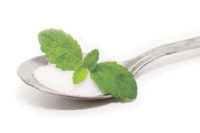Americans are better informed than ever about food. They’re also sorely misinformed. It’s almost a parallel universe to what the public is experiencing with real and “fake” news.
More importantly, according to findings from the International Food Information Council Foundation (IFIC)’s 12th Annual Food and Health Survey, America’s nutritional literacy is sorely lacking — and the nation’s health may be suffering as a result.
“As in previous years, the Food and Health Survey has shown that Americans feel overwhelmed by conflicting food and nutrition information,” said IFIC Foundation CEO Joseph Clayton. “But this year, we’re finding troubling signs that the information glut is translating into faulty decisions about our diets and health.”
The vast majority of consumers — eight in 10 (78 percent) — say they encounter conflicting information about what to eat/avoid. More than half of those (56 percent) say the conflicting information makes them doubt the choices they make.
Almost all consumers (96 percent) seek out health benefits from what they eat and drink (the top benefits being weight loss, cardiovascular health, energy and digestive health), but out of those, only 45 percent could identify a single food or nutrient associated with those benefits.
For example, while sources of omega-3 fatty acids such as fish oil can contribute to heart health, just 12 percent made an association between them, the survey finds.
In addition, while people are interested in getting energy benefits, less than 5 percent could name caffeine as providing those benefits.
What’s causing this confusion? Look around you. Despite best intentions, the people that consumers are closest to might actually be leading us astray, the report says. About three-quarters of consumers (77 percent) say they rely on friends and family at least a little for both nutrition and food safety information, which tops other sources including health professionals, news and the Internet. But only 29 percent actually have high trust level in family or friends as information sources, far behind sources such as registered dietitian nutritionists, other health or fitness professionals, and health-related websites. Bloodlines and best friends count more than professionals or programs.
Meanwhile, six in 10 consumers (59 percent) rated family and friends as the top influencer on decisions about their eating patterns or diets. Personal healthcare professionals were cited by 55 percent of consumers, while all other sources rated only in the single digits.
The Food and Health Survey also suggests that consumers might be paying too much or making flawed decisions about nutrition because of non-health factors — or mental shortcuts — that drastically alter our perception of what is healthful.
These factors include the form of the food (fresh, frozen, canned), place of purchase (e.g., convenience store vs. natural food store), the length of the ingredient list and price, among others — and they drive perceptions of healthfulness even between two foods with identical nutrition information.
For example, even with nutritionally identical products, consumers are almost five times as likely to believe a fresh product is healthier than canned and four times as likely to believe a fresh product is healthier than frozen. Consumers also are more likely to believe a product that costs $2 is healthier than an otherwise identical product that costs 99 cents.
For years, some influencers have driven home messages conflating nutrition with non-health values, and now consumers are paying the price — literally, or at the expense of other desired factors such as convenience or shelf life.
Aging drives health awareness
The IFIC Foundation, in collaboration with AARP Foundation, conducted an oversample of respondents ages 50–80 for its 2017 Food and Health Survey to help uncover insights into the diets and health of older Americans.
Compared with other segments of the population, those age 50–80:
- Are more confident in their choices. While 80 percent of all consumers say there’s a lot of conflicting information about what to eat and what to avoid, only 47 percent of those 50 – 80 say it makes them doubt the choices they make, compared to 61 percent of those ages 18 – 49.
- Use fewer information sources when deciding which foods to eat or avoid. Consumers age 50 – 80 also are less likely than Millennials to use friends and family as a common information source (40 percent vs. 23 percent).
- Are more likely to adopt and maintain healthy eating behaviors. Among the most significant differences, Americans age 50 – 80 are more likely than those age 18 – 49 to:
- Cut back on foods higher in saturated fat more than younger Americans (75 percent vs. 57 percent)
- Cut back on foods higher in salt (71 percent vs. 59 percent)
- Eat more foods with whole grains (70 percent vs. 62 percent)
- Consume smaller portions (68 percent vs. 59 percent)
- Compare sodium in various foods (63 percent vs. 52 percent)
- Cut back on full-fat dairy or replacing it with low- or no-fat alternatives (60 percent vs. 50 percent)
- Are more likely to be able to connect specific foods with the health benefits they seek. Of those who named a desired benefit, 49 percent of older Americans could associate it with a food or nutrient source, versus only 40 percent of younger Americans.
Meanwhile, Americans’ interest in getting weight-loss benefits from food and nutrients falls dramatically with age. Weight loss and management are far and away the most desired benefit, at 40 percent among those 18 – 34 and 38 percent from 35 – 49, but that drops to 23 percent from age 50 – 64 and 28 percent from 65 – 80.
The desire for foods and nutrients with cardiovascular benefits increases with age, from 11 percent ages 35 – 49 to 23 percent ages 50 – 64.
Confidence in the safety of the food supply increases significantly with age, with 55 percent from 18 – 49 saying they’re confident, 66 percent from 50 – 64, and 76 percent from 65 – 80.





